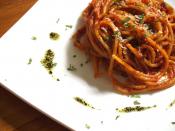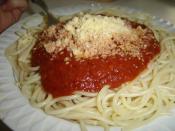� PAGE �1� � PAGE �1�
Daryl Christopher Yost
Science 300 Big Ideas In Science: From Methods to Mutation
Instructor Yolanda Sankey
Sunday August 09, 2009
I had eggs, sausage and potatoes for breakfast. I will start by speaking about sausage. The general idea is that sausage was developed by the Sumerians around 3000 BC. Once you've butchered an animal and made use of all the good bits, you chop up the bits such as offal and noses and things, and mix them with fat. Then you squeeze them into the intestines of the deceased animal cook them one way or another. The Scottish haggis and the Irish blood puddings are cooked in the stomach of the animal. An interesting fact about sausage: the Catholic church in Rome, way back, banned the sausage, for health reasons.
Today sausages in most parts of the Western world are required to contain named parts of animals and a limited amount of fat.
Nobody has ever been able to explain why a sausage sizzling in a pan or barbecue doesn't taste as good as it smells while cooking. Pork can contain up to 30% fat and 25% connective tissue and still be described as meat. There are many different types of sausage, but the sausage that I had for breakfast was called Jimmy Dean and is the same kind of sausage that is described.
Eggs have been consumed since the beginning of time. Eggs are most commonly obtained from chickens or ostriches. Eggs are relatively easy to obtain, excellent protein sources, can be made using many different types of recipes from simply boiled, fried, or stuffed for quiche, custards or meringue, and fit the bill for meatless fasting days required by some religions. In this last role? Eggs have been the object of much...


